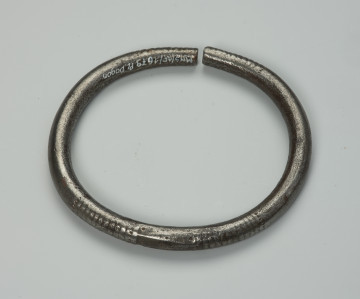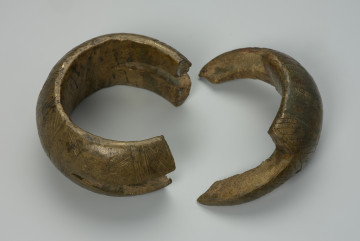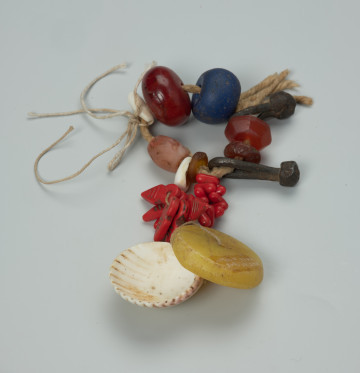
Bracelet
około 1940
National Museum in Szczecin
Part of the collection: Collection of Dogonian art
This rare bracelet was worn on the forearm by men holding high social and religious positions in the Dogon. It was a symbol of a higher social position. Bracelets made of iron are worn, among others, by hogons - priests of the lebe cult, who sometimes also perform the function of chiefs of a village or a group of villages. Torded bracelets (twisted around their axis) are also placed on the altars of the cult of wagem and binu and on personal altars. In Dogon country, each family has its own altar called wagem, on which family members are commemorated, except for women who have died during pregnancy or childbirth (yaupilu). The Dogon believe that the forces causing such deaths are dangerous and highly contagious, so altars erected for yaupilu are placed outside the village. Another group of altars can be found in the temples of the binu cult, where ancestors from mythical times are worshipped. The Dogon also erect personal altars: kutogolo - dedicated to one's head ku, intended to strengthen the person's power and bala - for left-handed people, because the Dogon believe that the left hand of the left-handed person is filled with an extraordinary power. Iron bracelets, just like ancestor statues, L-shaped wooden domolos and iron hooks gobo are ritual objects - filled with the spiritual power of the ancestor to whom the altar is dedicated. They also play a unique role in the healing and curing process. When ill, they are taken down from the altars and carried by Dogon women, who ask their ancestors for health.
Katarzyna Findlik-Gawron
Author / creator
Dimensions
cały obiekt: height: 2,9 cm, width: 11,2 cm
Object type
body adornment
Creation time / dating
Creation / finding place
Identification number
Location / status

około 1940
National Museum in Szczecin

między 1940 — 1950
National Museum in Szczecin

około 1970
National Museum in Szczecin
DISCOVER this TOPIC
National Museum in Szczecin
DISCOVER this PATH
Educational path